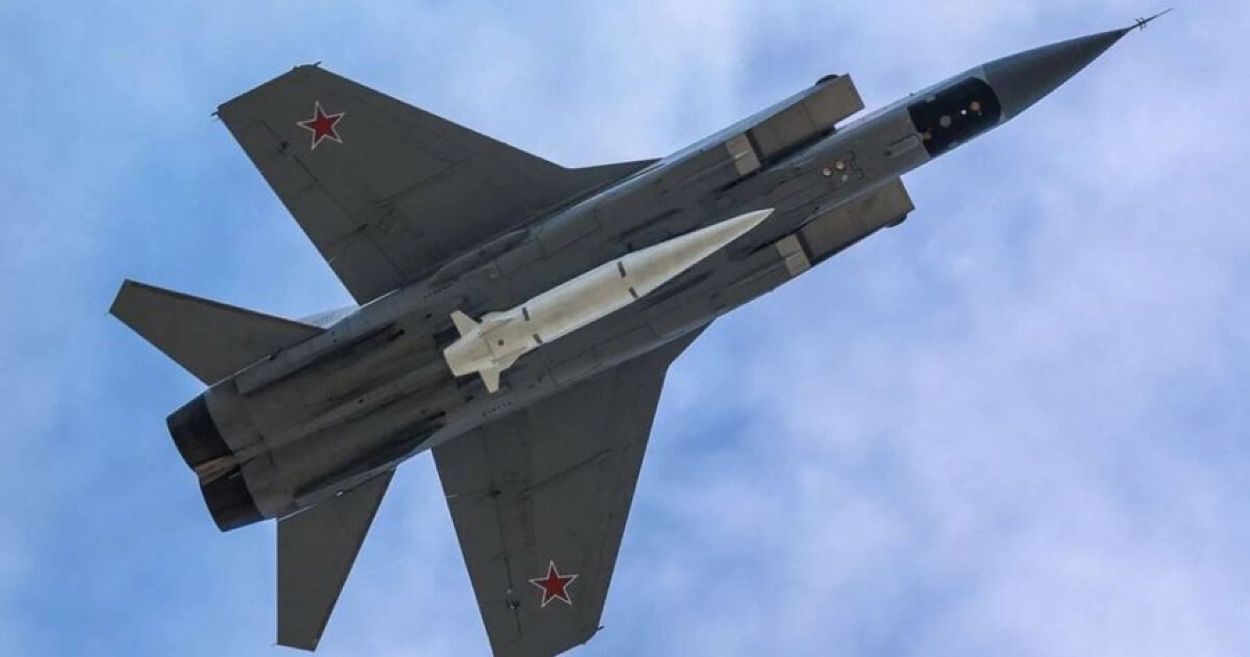Ukraine has periodically made claims of shooting down Kh-47M2 Kinzhal hypersonic missiles launched by Russian Aerospace Forces (RuAF) MiG-31K fighters.
On May 4, 2023, the commander of the Ukrainian Air Force, General Mykola Oleschuk, claimed that a Kinzhal had been intercepted using the Patriot air defense (AD) system.
On May 16, 2023, Ukrainian Air Force spokesperson claimed interception of all six Kinzhal missiles launched by six RuAF MiG-31K fighters. Confoundingly, the spokesperson admitted that one of the Kinzhal missiles had damaged a Patriot battery!
The joke going around social media is that Ukrainians claim interceptions whenever a Kinzhal strikes the ground in the target area – interception by the ground.
The fact is – the maneuvering hypersonic Kinzhal missile cannot be intercepted with current technology. In the subsequent paragraphs, I will first explain why the Kinzhal is such a formidable target and then dwell on the physics required to intercept such a target.
Kinzhal Launch Sequence
RuAF MiG-31K aircraft armed with Kinzhal missiles remain airborne and on patrol to the extent possible, unlike in the past when a MiG-31K would get airborne when required to attack a target.
Russia’s inventory of MiG-31K fighters was earlier limited. Izvestia recently reported there are now more than two dozen MiG-31K with the RuAF.
In the past, Ukraine would be alerted to a Kinzhal attack merely by observing a MiG-31K takeoff. Now, it faces Kinzhal attacks without any warning.
The coordinates and radar image of a target are transmitted to a patrolling MiG-31K over a secure data link. The targeting data, often obtained using a radar imaging satellite, can be relayed by the satellite directly to the MiG-31K or through ground control.
The weapons management and targeting system on the MiG-31K uses the received targeting data to program the autopilot of the Kinzhal, loads the target’s radar image into the missile’s seeker, and computes the launch point of the missile. The aircrew then initiates the launch sequence, which is completely automated.
The Kinzhal is essentially an Iskander-M missile with a shortened version of the Iskander-M rocket motor. The MiG-31K launch platform plays the role of the missing length of the rocket motor of the Iskander-M missile.
To launch the Kinzhal, the MiG-31K needs to be at the speed, altitude, and coordinates where Iskander-M would have been, with a similar residual burn time.
Once the missile is ready for release, the aircrew initiates the launch release sequence. The aircraft then flies autonomously, to accurately achieve missile launch parameters. Once the parameters are achieved, the aircrew releases the missile.
Typically, missile launch occurs at around 20 km altitude and a speed of Mach 2.
Upon release, the Kinzhal’s solid propellant rocket motor ignites to propel the missie. The autopilot controls the missile’s trajectory using aerodynamic fins. The missile climbs rapidly to the stratosphere boundary to minimize drag resistance
With a gain in flight altitude, aerodynamic fins become ineffective, and the missile switches to thrust vector control. Upon reaching the stratosphere boundary, the missile flies horizontally and accelerates to Mach 10.
During its entire flight to the target, the missile maneuvers randomly using thrust vector control and later fins to evade missile defense.
Arriving in the target area, the missile switches on its active radar-homing seeker. It continuously compares the radar image seen by its seeker with the target image loaded in its memory prior to launch. As soon as it detects a match, it manoeuvres to strike the target arriving within 10 m or so from the target.
Air Defence Challenge
To intercept a target successfully, an AD system must compute the coordinates of an interception point in airspace where the target and the interceptor missile will arrive at the same time.
The interceptor missile’s acceleration capabilities, the target missile speed, and the radar’s target detection range are critical to a successful interception.
In all cases, the aiming point is well ahead of the current position along the trajectory of the target missile.
If the target detection distance is short and the target speed is very high, as would be the case in a Kinzhal interception, there may be no possible aiming point!

In case of a very early detection, it would be possible to compute an aiming point, but it would be based on the current trajectory of the target missile. If the target missile changes trajectory continuously, the aiming point would have to be recomputed Ad Infinitum.
Closing in on the target missile, the inertia of the interceptor missile would rule out accurate tracking of the target.
Conclusion
Intercepting a maneuvering hypersonic missile during its terminal phase is a near impossibility with the current state of technology.
However, there does exist the possibility of intercepting a Kinzhal shortly after its release from a MiG-31K when it’s climbing to the stratosphere boundary and not maneuvering.
However, that would require the AD system, Patriot in this case, to be placed very close to the launch point of the Kinzhal. Considering that the Kinzhal has a range of 2000 km, the chances of a Patriot battery being within the 30 km (range of a PAC-3 interceptor missile) of the Kinzhal launch point are ruled out.
Besides, Ukraine has never presented any physical evidence of a Kinzhal shootdown claim.
- Vijainder K Thakur is a retired IAF Jaguar pilot. He is also an author, software architect, entrepreneur, and military analyst. VIEWS PERSONAL OF THE AUTHOR
- Follow the author @vkthakur




